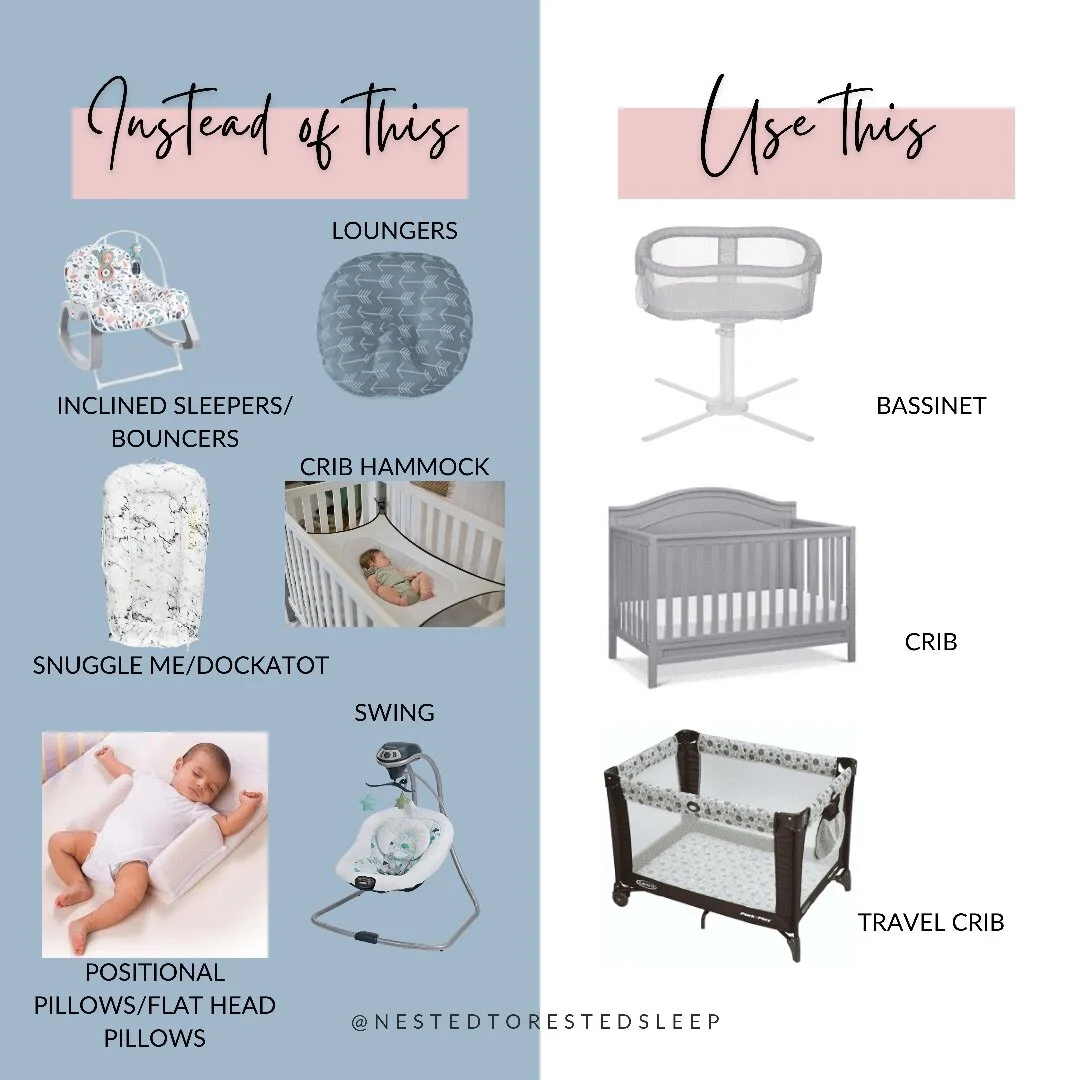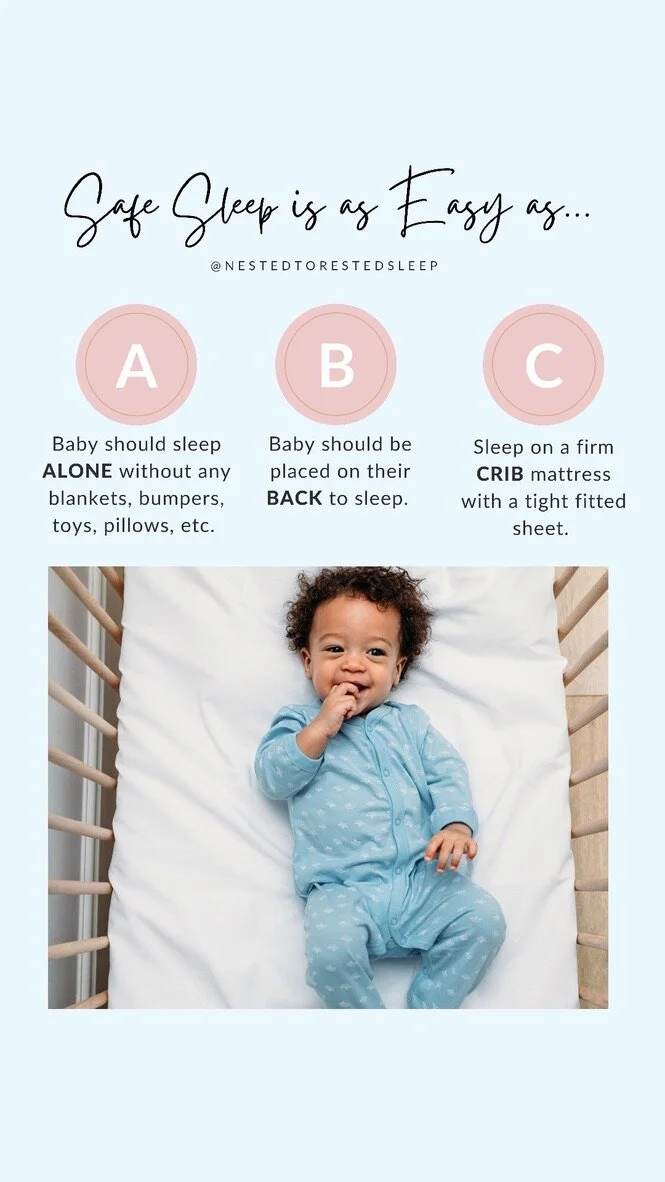SIDS: The Impact It Has On Your Baby & How You Can Reduce The Risk
October is SIDS Awareness Month.
What is SIDS?
Sudden Infant Death Syndrome, commonly referred to as SIDS. By definition, this is when a sudden death occurs in infants under 1 year of age that is unexpected and unexplained after a thorough investigation and autopsy. SIDS related deaths also occur during unobserved sleep periods, and typically are thought to be related to bed-sharing, metabolic disorders, arrhythmia disorders, abnormalities in the lower brainstem, or sleeping face down (NIH 2006). Each year, there are approximately 3,500 infants that die due to SUID (AAP, 2016). SUID is Sudden Unexplained Infant Death which can be classified as SIDS, death due to unknown causes, or accidental suffocation/strangulation in bed. The population at greater risk include boys and those between 1-4 months. (Boston Children’s Hospital).
How to Reduce the Risk of SIDS
While the cause of SIDS remains unexplained, health professionals have made recommendations for safer sleep and prevention methods to reduce the occurrence of infant deaths. The American Academy of Pediatrics (AAP) recommends that parents room-share at a minimum of 6 months and ideally for one year with their infant rather than bed-share. Room sharing reduces the risk of SIDS related deaths by 50%, and can prevent the dangers of bed-sharing such as suffocation.
Room-sharing also allows the parents to comfort and feed their infant quickly and easily as needed throughout the night. It also makes it easier to check in on him/her to make sure they are safe. Other recommendations to reduce the occurrence of SIDS related deaths are to keep the baby away from smoke and alcohol, breastfeed, and to be sure that he/she is regularly immunized. The American Academy of Pediatrics (AAP) offers a copious amount of safe sleep recommendations and SIDS preventative methods that parents can adopt to keep their little ones safe.
The AAP recommendations to prevent SIDS are as follows:
Babies should always be placed on their backs to sleep during naps and bedtime.
Use a firm sleep surface.
Only bring your baby into your bed to feed or comfort when you will be awake.
Bed-sharing is not recommended for any babies.
Room share for at least the first 6 months or for the first year if possible.
Keep soft objects, loose bedding, or any objects that could increase the risk of entrapment, suffocation, or strangulation out of the baby’s sleep area.
Do not let your child fall asleep on nursing pillows such as the Boppy or loungers like Snuggle Me Organic and Dockatot.
Never place your baby to sleep on a couch, sofa, or armchair.
It is fine to swaddle your baby until they can roll over. Try to transition out of the swaddle and into a sleep sack around 8-10 WEEKS.
Try giving a pacifier at nap time and bedtime if that is something you want to use.
WHAT ARE THE ABC’S OF SLEEP:
The AAP recommends the ABC’s of sleep:
A: Alone - Your baby should always be sleeping alone. This means no stuffed animals, toys, blankets, bumpers, or pillows.
B: Back - Always place your baby on his/her back for sleep.
C: Crib - Ensure that your baby only sleeps in a crib with a tight fitted sheet, a bassinet, or a travel crib that meet safety standards.
DOES SIDS IMPACT CERTAIN POPULATIONS AT A HIGHER RATE?
When looking at groups that are affected by SIDS at a greater rate than others, researchers typically find that minority groups are greatly affected by SIDS compared to their counterparts. African American, American Indian, and Alaska Native groups are affected at a much higher rate than caucasians when it comes to SIDS. When looking at the statistics, American Indians and Alaska Natives were affected 3x more than Hispanics, experiencing 177.6 SIDS related deaths per 100,000 births in the year 2013 (NPR, 2017). While the reason for this disparity remains unknown, researchers believe it may have something to do with brain abnormalities, sleeping behaviors such as bed-sharing, and genetic variations. Many cultures believe in practicing bed-sharing, which may be a reason that the disparity exists.
In a study that was done in North Carolina (Dr. Principe, 1997), researchers found that African-Americans also experienced a much higher rate of SIDS related deaths than caucasians. The connection of SIDS and the African-American population was correlated to maternal smoking, low birth weight, low maternal weight gain, low maternal age, and subpar prenatal care and education. The strongest predictor for SIDS related deaths in African-American populations was maternal smoking. After controlling for behavior, the heightened risk for SIDS lowered at a substantial rate. Smoking, drug use, and alcohol use increases SIDS risk in all populations though so it is advised not to bed-share especially if you are a smoker, drinker, or drug user.
Written by: Megan Brown, MPH Candidate @ Mercer University
Reviewed and Edited by: Unnati Patel, MPH
If you are looking for more support and tips on how to be well-rested and thrive in parenthood then please feel free to contact me for a FREE discovery call. I meet parents and child where they are to create a custom sleep plan to get your little one (and yourself) sleeping again.
NIGHT NIGHT,
Unnati
References:
Centers for Disease Control and Prevention. (2021, January 5). Suid and SDY case registry, SIDS. Centers for Disease Control and Prevention. Retrieved October 1, 2021, from https://www.cdc.gov/sids/case-registry.htm.
Duncan JR, Byard RW. Sudden Infant Death Syndrome: An Overview. In: Duncan JR, Byard RW, editors. SIDS Sudden Infant and Early Childhood Death: The Past, the Present and the Future. Adelaide (AU): University of Adelaide Press; 2018 May. Chapter 2. Available from: https://www.ncbi.nlm.nih.gov/books/NBK513399/
HealthPartners. (2021, August 25). The abcs of safe sleep for infants. HealthPartners Blog. Retrieved October 1, 2021, from https://www.healthpartners.com/blog/safe-sleep-for-infants/.
Hobson, K. (2017, May 15). Racial And Ethnic Disparities Persist In Sudden Infant Deaths. NPR. Retrieved October 1, 2021, from https://www.npr.org/sections/health-shots/2017/05/15/528173372/racial-and-ethnic-disparities-persist-in-sudden-infant-deaths.
Leong, T., Billaud, M., Agarwal, M., Miller, T., McFadden, T., Johnson, J., Lazarus, SG. (2019). As Easy as ABC: Evaluation of Safe Sleep Initiative on Safe Sleep Compliance in a Freestanding Pediatric Hospital. Injury Epidemiology. https://injepijournal.biomedcentral.com/articles/10.1186/s40621-019-0205-z.
Mayo Foundation for Medical Education and Research. (2020, May 20). Sudden infant death syndrome (SIDS). Mayo Clinic. Retrieved October 1, 2021, from https://www.mayoclinic.org/diseases-conditions/sudden-infant-death-syndrome/symptoms-causes/syc-20352800.
Miller, T. J., Salm Ward, T. C., McClellan, M. M., Dawson, L., Ford, K., Polatty, L., Walcott, R. L., & Corso, P. S. (2018). Implementing a Statewide Safe to Sleep Hospital Initiative: Lessons Learned. Journal of community health, 43(4), 768–774. https://doi.org/10.1007/s10900-018-0483-3
Moon, D. R. (2021). How to keep your sleeping baby safe: Aap policy explained. HealthyChildren.org. Retrieved October 1, 2021, from https://www.healthychildren.org/English/ages-stages/baby/sleep/Pages/A-Parents-Guide-to-Safe-Sleep.aspx.
Moon, D. R. (2021, June 1). How to keep your sleeping baby safe: Aap policy explained. HealthyChildren.org. Retrieved October 1, 2021, from https://www.healthychildren.org/English/ages-stages/baby/sleep/Pages/A-Parents-Guide-to-Safe-Sleep.aspx.
Moon, R. Y., & Task Force On Sudden Infant Death Syndrome. (2016, November 1). SIDS and other sleep-related infant deaths: Evidence base for 2016 updated recommendations for a safe infant sleeping environment. American Academy of Pediatrics. Retrieved October 1, 2021, from https://pediatrics.aappublications.org/content/138/5/e20162940.
Safe sleep. American Academy of Pediatrics. (n.d.). Retrieved October 1, 2021, from https://www.aap.org/en/patient-care/safe-sleep/.
Salm Ward, T., Miller, T., McClellan, M., Brown, S. (2018). Evaluation of a Crib Distribution and Safe Sleep Educational Program to Reduce Risk of Sleep-Related Infant Death. Journal of Community Health, https://doi.org/10.1007/s10900-018-0493-1.
Sudden infant death syndrome (SIDS): Symptoms & causes: Boston Children's Hospital. Boston Childrens Hospital. (n.d.). Retrieved October 1, 2021, from https://www.childrenshospital.org/conditions-and-treatments/conditions/s/sudden-infant-death-syndrome-sids/symptoms-and-causes.
U.S. Department of Health and Human Services. (2006, October 31). SIDS infants show abnormalities in brain area controlling breathing, heart rate. National Institutes of Health. Retrieved October 1, 2021, from https://www.nih.gov/news-events/news-releases/sids-infants-show-abnormalities-brain-area-controlling-breathing-heart-rate#:~:text=The%20lower%20brainstem%20helps%20control,%2C%20body%20temperature%2C%20and%20arousal
Walcott, R., Salm Ward, T., Ingels, J., Llewellyn, N., Miller, T., Corso, P. (2017). A Statewide Hospital-Based Safe Infant Sleep Initiative: Measurement of Parental Knowledge and Behavior. Journal of Community Health, https://doi.org/10.1007/s10900-017-0449-x.



